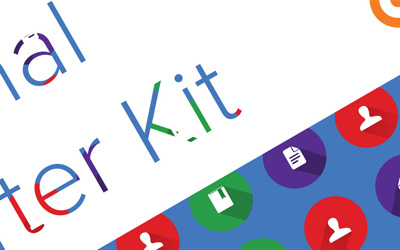
Since I helped get Scholastica up and running in 2013, it’s been exciting to work towards a future where more scholarship is published open access and less money flows from universities to large corporate profits — but it’s always been a question of when the tipping point would be. When would the open access movement go mainstream? When would journal publishers en masse be looking to reduce their publishing costs while still retaining high-quality output? When would technology level the playing field between small and gigantic publishers?
I think the answer to the question, “when will the history books say was the major turning point towards a lower cost and open access publishing model?” is now — and I’m excited for Scholastica to support sustainable, high-quality open access journal publishing. I think the last 20 years of efforts by scholars, librarians, and funders to push open access is showing real traction, and I think the next 5 years are going to reveal massive change in academic publishing — for the better.
At Scholastica, we work with some amazing open access journals run by scholarly associations, academic institutions, and scholar-led non-profits — from Discrete Analysis to Survey Practice to the Georgetown Medical Review. These kinds of journals are the vanguard of the new open access future, where publishers of any size can publish open access journals at the same quality level as the large publishers.
This is what Scholastica is focused on: making publishing high-quality open access journals at an affordable cost a sustainable reality for publishers of any size.
Open access and lower costs: two goals for academic publishing
As I’ve spoken to journal publishers over the years, I have consistently heard support for the move to open access — and an equally consistent acknowledgment that publishers don’t have a clear sense of how to publish open access journals in a financially sustainable way. Many of these publishers are scholarly societies or university presses or small academic-led non-profits who aren’t trying to make big bucks off of publishing — they’re trying to support their missions and open access while staying financially afloat. They’ve built publishing workflows based on subscription revenue, and the move to open access has them questioning where they can find efficiencies in this new publishing model.
Scholastica’s mission reflects these goals and concerns: we want to make it super easy to publish open access journals at the same professional quality as a huge publisher - but at a fraction of the cost and time.
When I say “publish at the same professional quality,” I’m thinking of a relatively high bar that includes the requirements from Plan S, but also more general professional tools and outputs that publishers need to operate modern open access journals:
- Published articles in various formats that look professional and are easy to read for scholars (HTML, PDF, etc.)
- Full text available in machine-readable XML
- High-quality metadata including citations and funding metadata
- Integrations with important scholarly tools (reference managers, indexes, databases, institutional repositories, pre-prints, archives, etc.)
- Powerful reporting and analytics
- Meeting industry-standard publishing practices and policies (e.g., DOIs, ISSNs, licensing and archiving policies, making underlying data and code available, etc.)
For small publishers, doing all of this well is a major challenge. Learning all these standards is itself a difficult and time-consuming project, let alone implementing and maintaining these standards over time. I know that Scholastica can make it easier.
Scholastica has always been about building software to lower the cost of academic publishing — and that includes lowering the time cost involved in doing work and learning what needs to be done — which is why we’re working on making it easier to meet all of these high-quality publishing standards.
If Scholastica does this well — if we can make it easy and affordable to publish at a very professional level — the cost of scholarship drops. If we do this well, journals can remain academic-led without feeling pressure to cede control to large corporate publishers. If we do this well, scholarship itself becomes more accessible, open, and interlinked in ways to promote better scholarship moving forward.
In terms of Plan S, I want to see journals not only be Plan S compliant, but do so affordably and easily. Scholastica’s role is to make the technical requirements happen for journal publishers at a price point well below the $3k-$5k price tag large publishers attach to each article published. The old way was publishing contracts and subscriptions — the new way is technology that makes sustainable open access possible for publishers of any size.
Journal publishers are worried that meeting the publishing requirements to be a professional (and Plan S-compliant) open access journal will be expensive and technically complicated — but it won’t be, not with Scholastica.
Our roadmap for Plan S, and beyond
Scholastica will enable easy and affordable journal publishing that is also Plan S compliant for journals using our open access publishing platform and production service by:
- Handling all of the technical requirements: producing XML (in JATS format), supplying rich metadata, including license and funding information, etc.
- Developing integrations with external services (e.g., CrossRef’s suite of journal products) to make it easy for journals to leverage industry-standard services, data, and analytics
- Helping journals officially register their Plan S compliance with funders and authors, once the “mechanisms for identifying and signalling whether journals/publishing platforms […] fulfil the cOAlition S requirements” are decided (per the Plan S guidelines)
- Translating Plan S requirements into actionable steps for journals using the Scholastica platform for peer review and/or open access publishing
- Providing clear guides and documentation so journal publishers can easily understand the various requirements and standards, and easily know how to configure their journal account on Scholastica to meet them
- Answering individual questions about Plan S requirements and other professional journal standards from our customers via our support team, at no additional cost
- Monitoring Plan S changes and guidelines, and maintaining both the functionality and guidance we offer our customers
- Continuing to improve the platform — peer review, typesetting, and journal website/content hosting — so it is ever easier for journal publishers and editors to manage high-quality open access journals using Scholastica
What’s next?
Over the coming months, we will announce new functionality that supports complying with Plan S guidelines, and we’re committed to updating our software to meet changes to the Plan S implementation rules as they come out. These improvements will not only support Plan S journals — they will support any publishing organization looking to publish high-quality open access journals at an affordable cost.
Expect to see announcements about new functionality, as well as enhancements to existing products to meet the technical requirements and standards of professional open access journals. Also expect to see guides and documentation explaining the various requirements so journal publishers know what they need to do in practice and what they need to configure on Scholastica to be Plan S-compliant and meet professional journal publishing standards.
I want our users to know that Scholastica is here to help — just reach out to support@scholasticahq.com if there’s anything you hope we can help with. We’re excited to help more journals transition to sustainable and professional open access publishing models — and I want you to know that the whole Scholastica team is in this with you.
To learn more about how Scholastica is supporting journals in the transition to Plan S and sustainable open access publishing, visit our Product Roadmap: Plan S, Core Open Access Publishing Standards & Scholastica.









